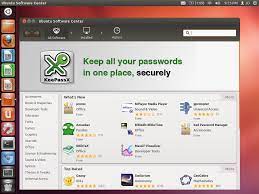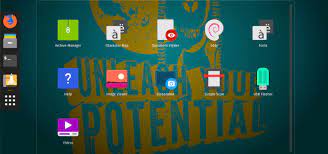Exploring Open Source Software Options for Windows Users
Exploring Open Source Software for Windows
Open source software has long been associated with the Linux operating system, but did you know that there are also a plethora of open source options available for Windows users? In recent years, the open source community has expanded its offerings to cater to a wider audience, including those who prefer to use Windows as their primary operating system.
One of the key benefits of open source software is that it is typically free to use, meaning that users can access high-quality applications without having to pay a premium. This can be particularly appealing for individuals and businesses looking to reduce costs without compromising on functionality.
When it comes to open source software for Windows, the options are vast and varied. From productivity tools and multimedia applications to development environments and security solutions, there is something for everyone in the world of open source.
Benefits of Open Source Software on Windows:
- Cost-effective: Open source software is often free to use, making it an affordable alternative to commercial applications.
- Customisable: Many open source applications allow users to modify and adapt the software to suit their specific needs.
- Community Support: The open source community is known for its collaborative nature, meaning that users can benefit from a wealth of online resources and forums.
- Security: With open source software, users have greater transparency into how the application works, which can help identify and address security vulnerabilities more effectively.
Popular Open Source Software for Windows:
Some well-known examples of open source software available for Windows include:
- LibreOffice: A powerful office suite that includes word processing, spreadsheet, presentation, and database applications.
- GIMP: An advanced image editing tool that rivals commercial alternatives like Adobe Photoshop.
- Mozilla Firefox: A popular web browser known for its speed, privacy features, and customisation options.
- VLC Media Player: A versatile media player that supports a wide range of audio and video formats.
If you’re interested in exploring the world of open source software on Windows, why not give some of these applications a try? You may be pleasantly surprised by the quality and functionality that open source has to offer!
9 Benefits of Open Source Software for Windows: Cost, Customisation, and More
- Cost-effective
- Customisable
- Community Support
- Transparency
- Innovation
- Compatibility
- Security
- Freedom
- Quality Assurance
Challenges of Open Source Software for Windows: Key Concerns and Limitations
- Limited Technical Support
- User Interface Variability
- Compatibility Challenges
- Security Concerns
- Lack of Regular Updates
- Learning Curve
Cost-effective
One significant advantage of open source software for Windows is its cost-effectiveness. Many open source applications are freely available for users to download and use, eliminating the need to pay expensive licensing fees. This not only saves users money but also allows them to access high-quality software without financial barriers, making open source solutions an attractive option for individuals and businesses looking to reduce costs while still benefiting from powerful and feature-rich applications.
Customisable
One significant advantage of open source software for Windows is its customisability. Users have the freedom to modify the source code of open source applications to tailor them to their specific requirements and preferences. This level of flexibility allows individuals and businesses to create bespoke solutions that align perfectly with their unique needs, offering a level of control and personalisation that is often not possible with proprietary software. Whether it’s adjusting features, enhancing performance, or integrating additional functionality, the ability to customise open source software empowers users to truly make their digital tools work for them.
Community Support
The beauty of open source software for Windows lies in its strong community support. The open source community offers a rich array of resources and forums where users can seek assistance, share knowledge, and collaborate with like-minded individuals. Whether you’re a beginner looking for guidance or an experienced user seeking to troubleshoot a complex issue, the collective expertise of the open source community ensures that help is always just a click away. This vibrant ecosystem of support fosters a culture of collaboration and learning, making open source software not just a tool, but a community-driven experience.
Transparency
Transparency is a significant advantage of open source software for Windows users. By having access to the code, users can scrutinise and validate the security and integrity of the software. This level of transparency empowers users to understand how the application functions, identify potential vulnerabilities, and contribute to enhancing its overall security. Ultimately, this transparency fosters trust and confidence in the software, providing users with greater control over their digital environment.
Innovation
One significant advantage of open source software for Windows is its capacity to foster collaboration and innovation among developers on a global scale. By providing a platform for individuals from diverse backgrounds to work together, open source projects facilitate the sharing of ideas, expertise, and resources. This collaborative environment not only accelerates the development process but also encourages the exploration of new solutions and approaches, ultimately leading to the creation of innovative and cutting-edge software that benefits users worldwide.
Compatibility
One significant advantage of open source software for Windows is its compatibility across multiple platforms. Open source applications are designed to work seamlessly on various operating systems, providing users with the flexibility to use the software on different platforms without limitations. This compatibility feature not only enhances user convenience but also promotes interoperability and ensures a consistent user experience regardless of the device or system being used.
Security
The security aspect of open source software for Windows is a significant advantage due to its transparent nature. The open-source model enables users to access the source code, facilitating quicker identification and resolution of security vulnerabilities. With a collaborative community constantly scrutinising the code, any potential security issues can be detected and addressed promptly, enhancing the overall security of open source applications on the Windows platform.
Freedom
One significant advantage of open source software for Windows is the freedom it provides to users. With open source applications, users have the liberty to run, study, modify, and distribute the software according to their preferences and requirements. This level of freedom empowers users to tailor the software to meet their specific needs, fostering a culture of innovation and collaboration within the open source community. By granting users such autonomy, open source software promotes creativity, flexibility, and a sense of ownership that is unparalleled in the realm of proprietary software.
Quality Assurance
Quality Assurance is a significant advantage of open source software for Windows. Many open source projects benefit from thorough testing conducted by a diverse global community of contributors. This collaborative effort ensures that the software undergoes rigorous scrutiny, leading to improved reliability and performance. With a wide range of individuals testing and providing feedback on the software, issues can be identified and resolved quickly, resulting in high-quality products that meet the needs of users effectively.
Limited Technical Support
One significant drawback of open source software for Windows is the limited technical support it often provides. Unlike commercial software that typically offers dedicated customer support, open source applications may lack direct assistance channels, making it challenging for users to troubleshoot issues effectively. This can result in prolonged downtime, frustration, and a reliance on community forums or online resources for resolving technical problems. The absence of immediate and personalised technical support can be a barrier for users who require prompt assistance with complex issues while using open source software on their Windows systems.
User Interface Variability
User Interface Variability can be a notable con of open source software for Windows. The user interfaces of open source applications often exhibit a wide range of designs and usability features, which can lead to inconsistency and confusion for users. This variability in interface design may make it challenging for some users to navigate and effectively utilise different open source applications, especially if they are accustomed to more uniform interfaces found in commercial software. As a result, users may experience difficulties in adapting to the diverse user interface styles present across various open source software applications on the Windows platform.
Compatibility Challenges
Compatibility Challenges: While open source software for Windows offers a wide range of benefits, one potential drawback is the presence of compatibility challenges. Due to the diverse nature of hardware configurations and software environments, some open source applications may encounter issues when trying to interface with specific hardware components or other software programs. This can lead to functionality limitations or performance issues, requiring users to invest time and effort in troubleshooting and finding workarounds to ensure smooth operation. It is essential for users to research compatibility requirements before adopting open source software to mitigate these challenges effectively.
Security Concerns
Security Concerns: Despite the transparency that open source software offers, a significant con is the potential security risks it poses. While the open nature of the code allows for scrutiny and collaboration in identifying vulnerabilities, it also means that these weaknesses can be exploited by malicious actors if not promptly addressed. This heightened exposure to security threats underscores the importance of proactive monitoring, timely updates, and robust security measures when utilising open source software on Windows systems.
Lack of Regular Updates
An inherent drawback of open source software for Windows is the potential lack of regular updates. The frequency and quality of updates can vary significantly depending on the resources and dedication of the development team behind a particular project. In some cases, open source projects may suffer from infrequent updates or delayed bug fixes, which can leave users vulnerable to security risks and hinder the overall user experience. It is essential for users to carefully assess the update history and community support of an open source software before integrating it into their systems to mitigate potential issues arising from stagnant development.
Learning Curve
One significant drawback of open source software for Windows is the learning curve it presents to users who are unfamiliar with the principles and practices of the open source community. Navigating the community-driven nature of development and support can be challenging for those accustomed to traditional commercial software models. Understanding how to engage with the community, contribute to projects, and seek support from fellow users requires a shift in mindset that may deter some individuals from fully embracing the benefits of open source software on the Windows platform.







